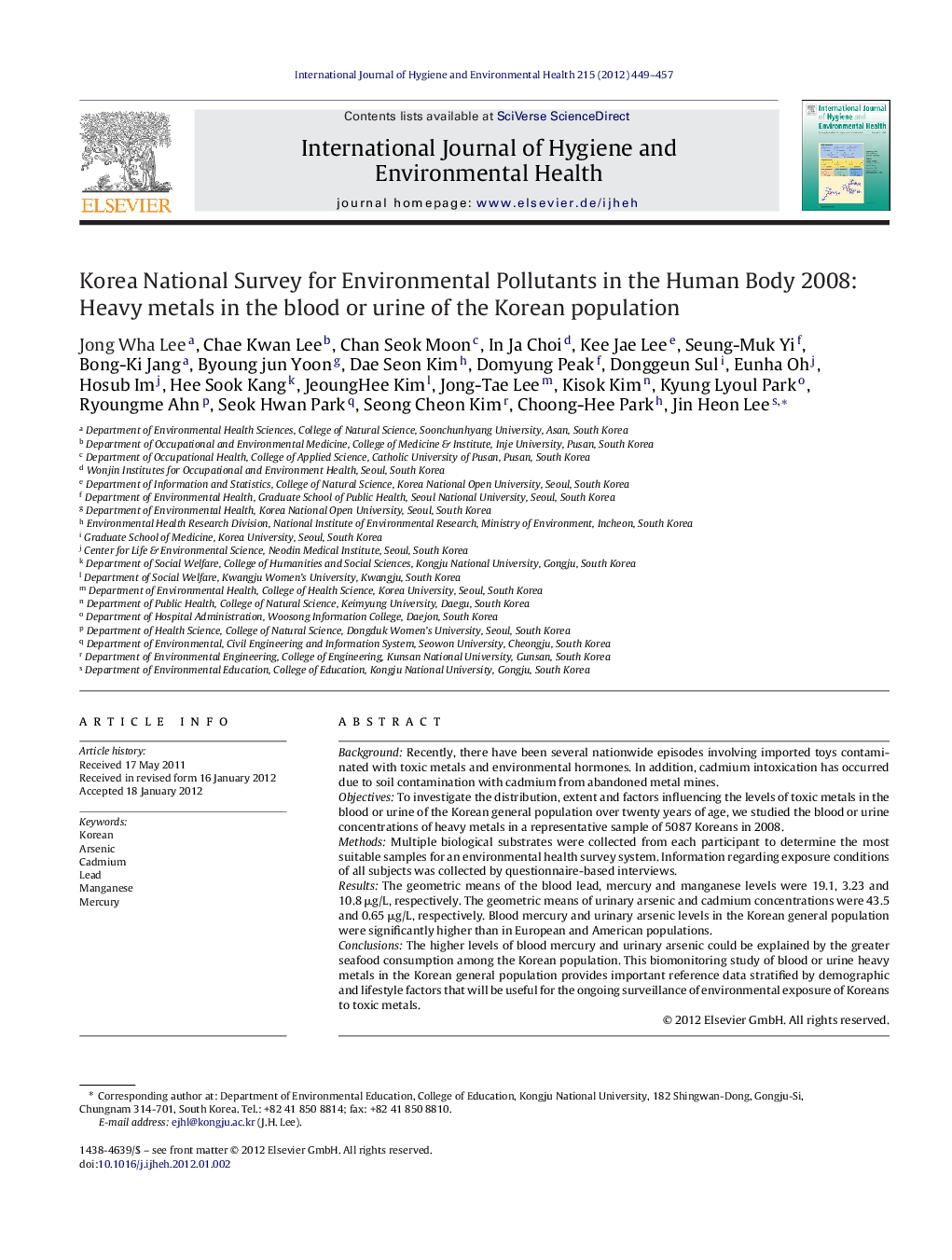| Article ID | Journal | Published Year | Pages | File Type |
|---|---|---|---|---|
| 2588710 | International Journal of Hygiene and Environmental Health | 2012 | 9 Pages |
BackgroundRecently, there have been several nationwide episodes involving imported toys contaminated with toxic metals and environmental hormones. In addition, cadmium intoxication has occurred due to soil contamination with cadmium from abandoned metal mines.ObjectivesTo investigate the distribution, extent and factors influencing the levels of toxic metals in the blood or urine of the Korean general population over twenty years of age, we studied the blood or urine concentrations of heavy metals in a representative sample of 5087 Koreans in 2008.MethodsMultiple biological substrates were collected from each participant to determine the most suitable samples for an environmental health survey system. Information regarding exposure conditions of all subjects was collected by questionnaire-based interviews.ResultsThe geometric means of the blood lead, mercury and manganese levels were 19.1, 3.23 and 10.8 μg/L, respectively. The geometric means of urinary arsenic and cadmium concentrations were 43.5 and 0.65 μg/L, respectively. Blood mercury and urinary arsenic levels in the Korean general population were significantly higher than in European and American populations.ConclusionsThe higher levels of blood mercury and urinary arsenic could be explained by the greater seafood consumption among the Korean population. This biomonitoring study of blood or urine heavy metals in the Korean general population provides important reference data stratified by demographic and lifestyle factors that will be useful for the ongoing surveillance of environmental exposure of Koreans to toxic metals.
